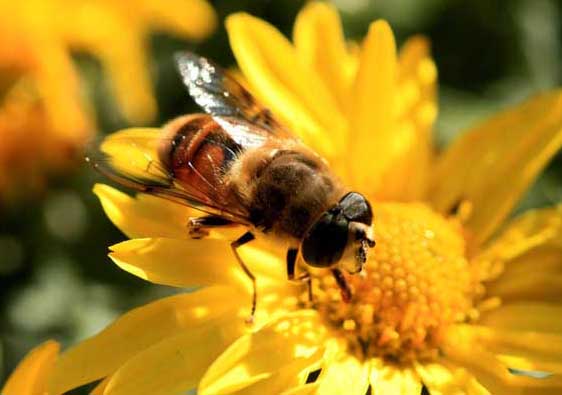This is Scientific American — 60-Second Science. I'm Christopher Intagliata.
Over the last year, beekeepers in the U.S. lost nearly half their honeybee hives. And there are a lot of suspected culprits for this so-called beepocalypse—from parasitic mites, to viruses, to simple land use changes. But a study out earlier this year pointed to another possibility: poor sperm quality among the drone bees, leading to colony crashes. And now another group of researchers may have found a reason for the subpar sperm: neonicotinoid pesticides. These substances contain chemicals similar to nicotine and affect insect nervous systems.
"So for the drones that were exposed to pesticides during development, it appears there were more dead sperm in their reproductive tracts." Geoff Williams, an entomologist at the University of Bern in Switzerland and Agroscope, a Swiss federal research facility.

Williams and his colleagues studied the effects of two neonicotinoid pesticides on honeybee drones, genetically assigned to mate with queens. "They've got really big eyes so they can identify these queens flying through the air. They eat and have sex. Or try to have sex at least."
But in 20 honeybee hives Williams and his collaborators found that those drones exposed to standard environmental levels of the pesticides were shorter-lived, thus having fewer opportunities to mate. And even if the drones did survive, they had nearly 40 percent fewer living sperm than did control bees—meaning the pesticides were acting like honeybee contraceptives. The study appears in the Proceedings of the Royal Society B.
Williams says pesticides are just one of many factors assaulting bees. But it looks like the way farmers treat some crops could adversely affect the pollinators those crops also rely on.
Thanks for listening for Scientific American — 60-Second Science Science. I'm Christopher Intagliata.











